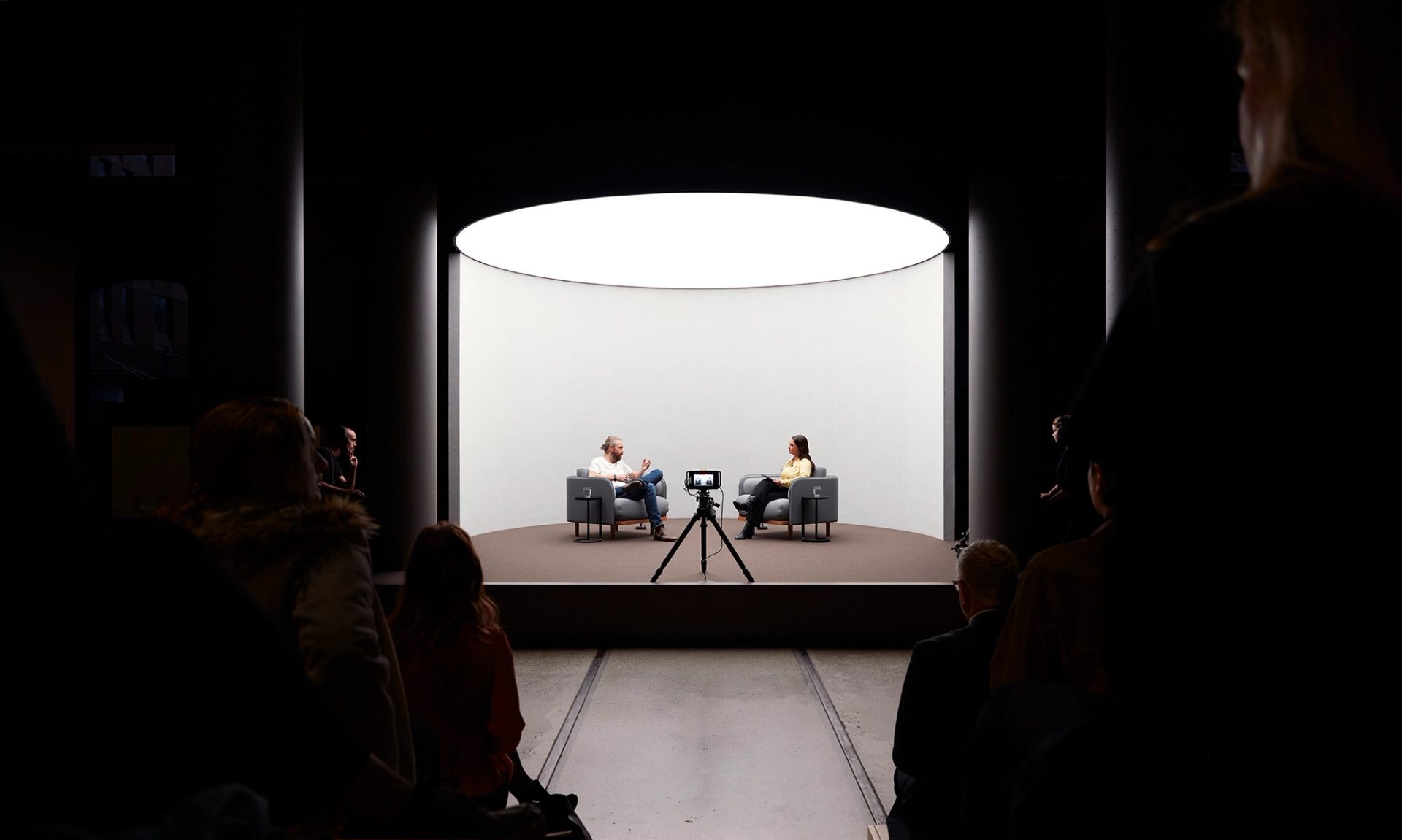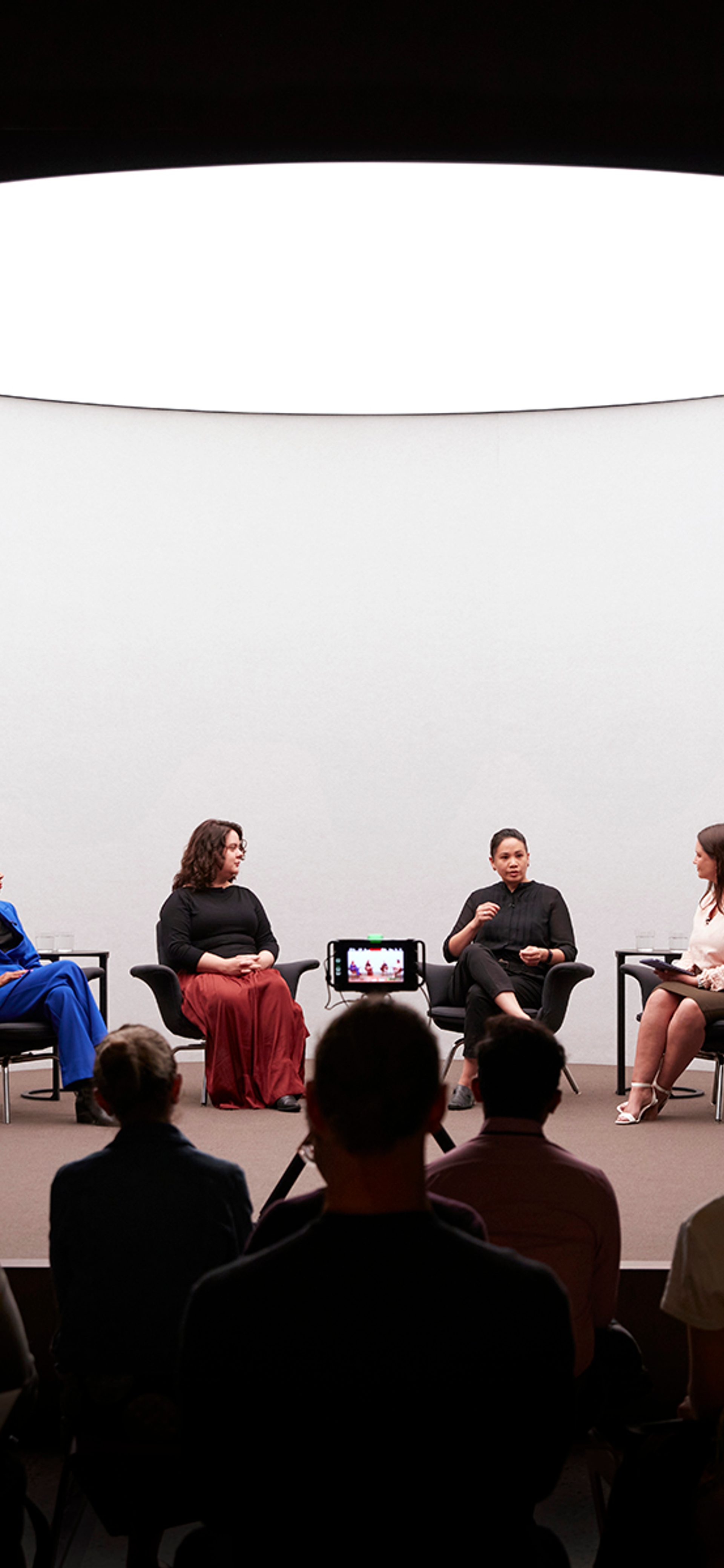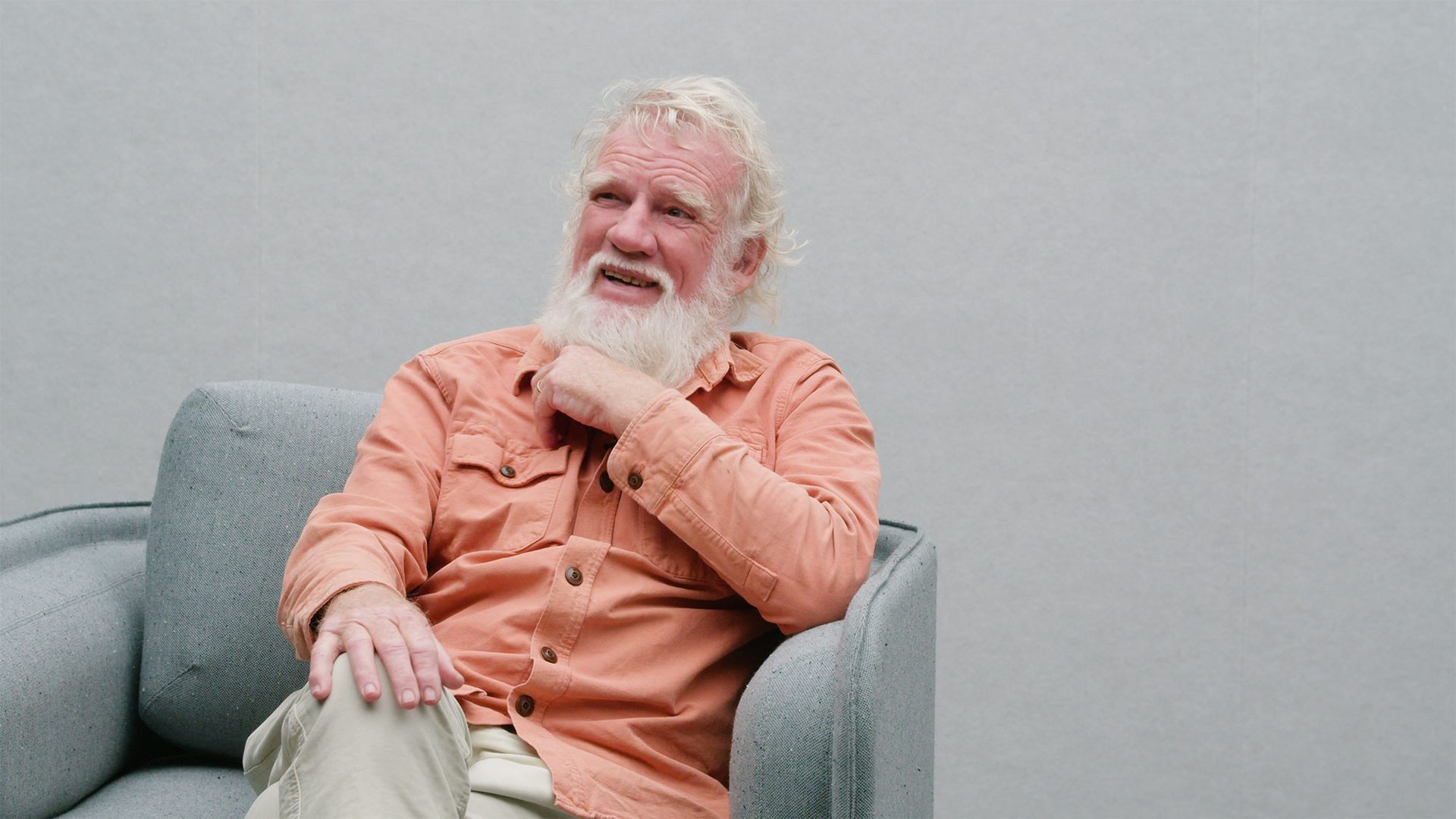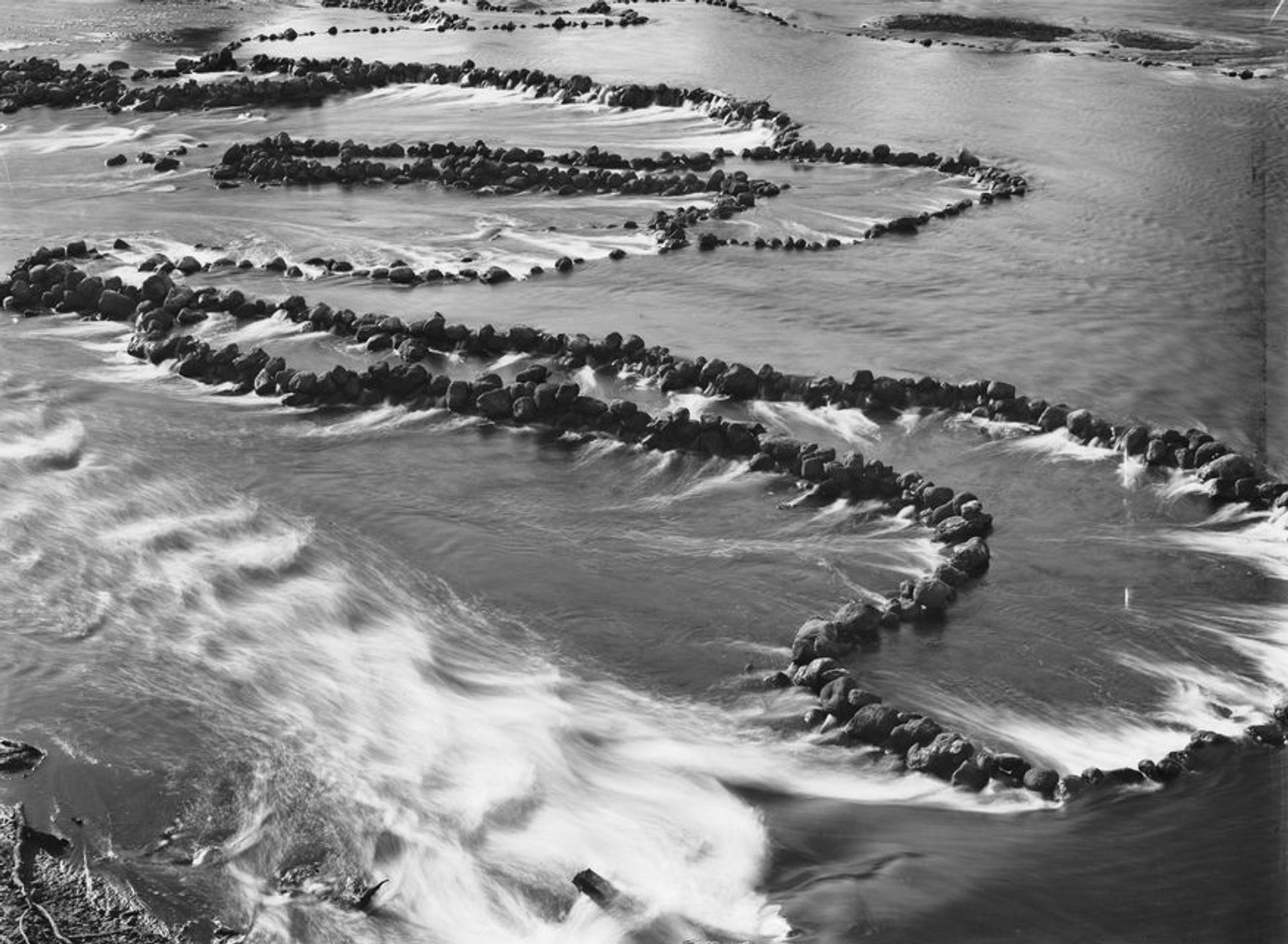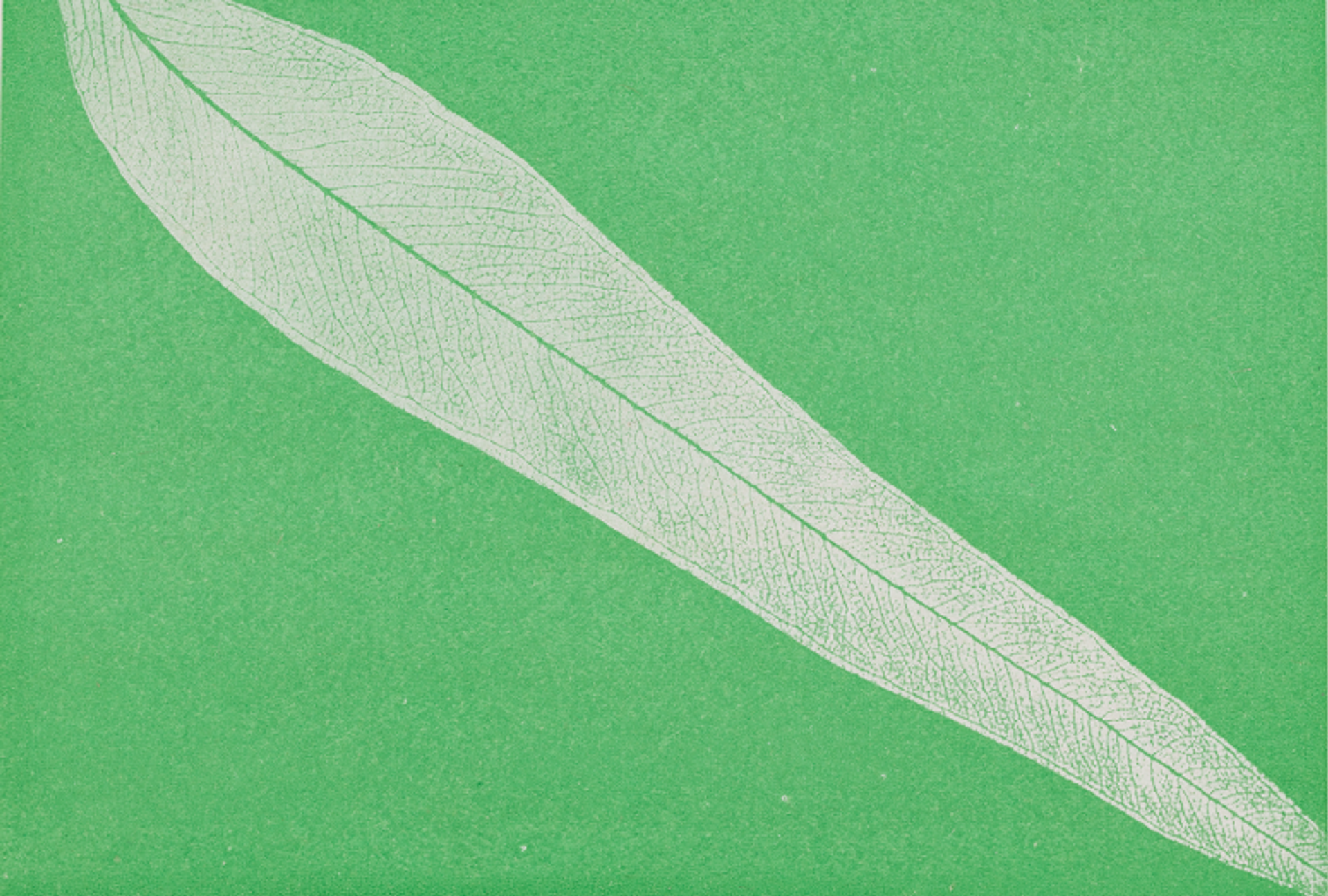Powerhouse Climate Action Plan 2022–2025

‘The foundation of our response to climate change is drawn from the knowledge, understanding and ingenuity of First Nations peoples to care for Country in ways that are inherently sustainable.’
This panel launching the Powerhouse Climate Action Plan was recorded at Powerhouse Ultimo as part of 100 Climate Conversations.
Following an introduction by Powerhouse chief executive Lisa Havilah, a panel featuring Powerhouse First Nations director, Emily McDaniel, First Nations collaborator Terri Janke, and Powerhouse sustainability manager Carmel Reyes discusses the Powerhouse inaugural Climate Action Plan and its commitment of achieving net zero operational carbon emissions by 2025.
Sustainability is integral to the Powerhouse renewal, which presents a once-in-a-generation opportunity to embed low carbon solutions into Powerhouse infrastructure to reduce its operational environmental impact and improve its responsiveness to climate, season and sustainability.
Lisa Havilah Good morning, everyone, and welcome to the Powerhouse. My name is Lisa Havilah and I’m the chief executive of the Powerhouse museum. I acknowledge the Traditional Custodians of the ancestral homelands upon which our museums are situated. We respect their Elders past, present and future and recognise their continuous connection to Country. Today we are recording a very special episode of 100 Climate Conversations to launch the Powerhouse Climate Action Plan. The foundation of our response to climate change is drawn from the knowledge, understanding and ingenuity of First Nations peoples to care for Country in ways that are inherently sustainable. The Powerhouse Climate Action Plan sets out a clear path across our infrastructure, program, practices to achieve net zero operational emissions by 2025.
This commitment places Powerhouse in a global leadership position. Sustainability is integral to the Powerhouse’s landmark $1.5 billion renewal spearheaded by the creation of Powerhouse Parramatta, research and public facilities at Powerhouse Castle Hill, the renewal of the iconic Powerhouse Museum here in Ultimo, alongside the ongoing operation of the Sydney Observatory. Powerhouse will embed sustainability and collection management and prioritise collaboration and research with industry thought leaders and reduce carbon emission impacts associated with exhibition design and program development. To achieve the ambitious targets set in our Climate Action Plan, collaboration is key.
I would like to acknowledge and warmly thank our key partners, instrumental to the development and implementation of this plan who are with us today, including our New South Wales Government partners, Infrastructure New South Wales and the sustainable government team; local government partners City of Sydney and City of Parramatta; Powerhouse Parramatta construction partner, Lendlease; Consultants 100% Renewables, LCI and ESGplus and of course, Terri Janke and Company. Today, we’ll give an insight into the development of the plan and how it will be realised across the museum and it gives me the greatest pleasure to introduce today’s guests, Powerhouse First Nations director Emily McDaniel, First Nations collaborator Terri Janke, Powerhouse climate action and sustainability manager Carmel Reyes. Please join me in welcoming them.
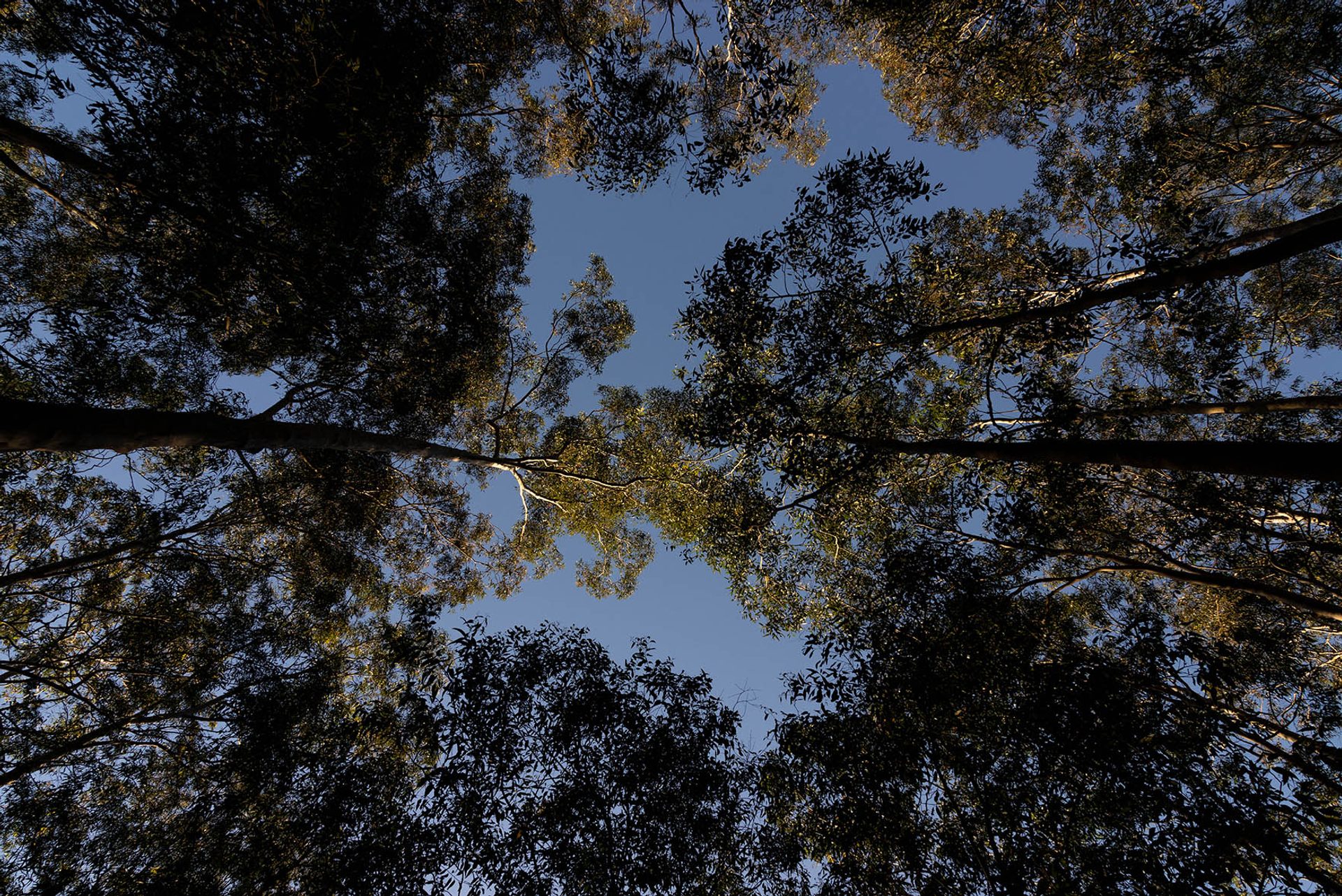
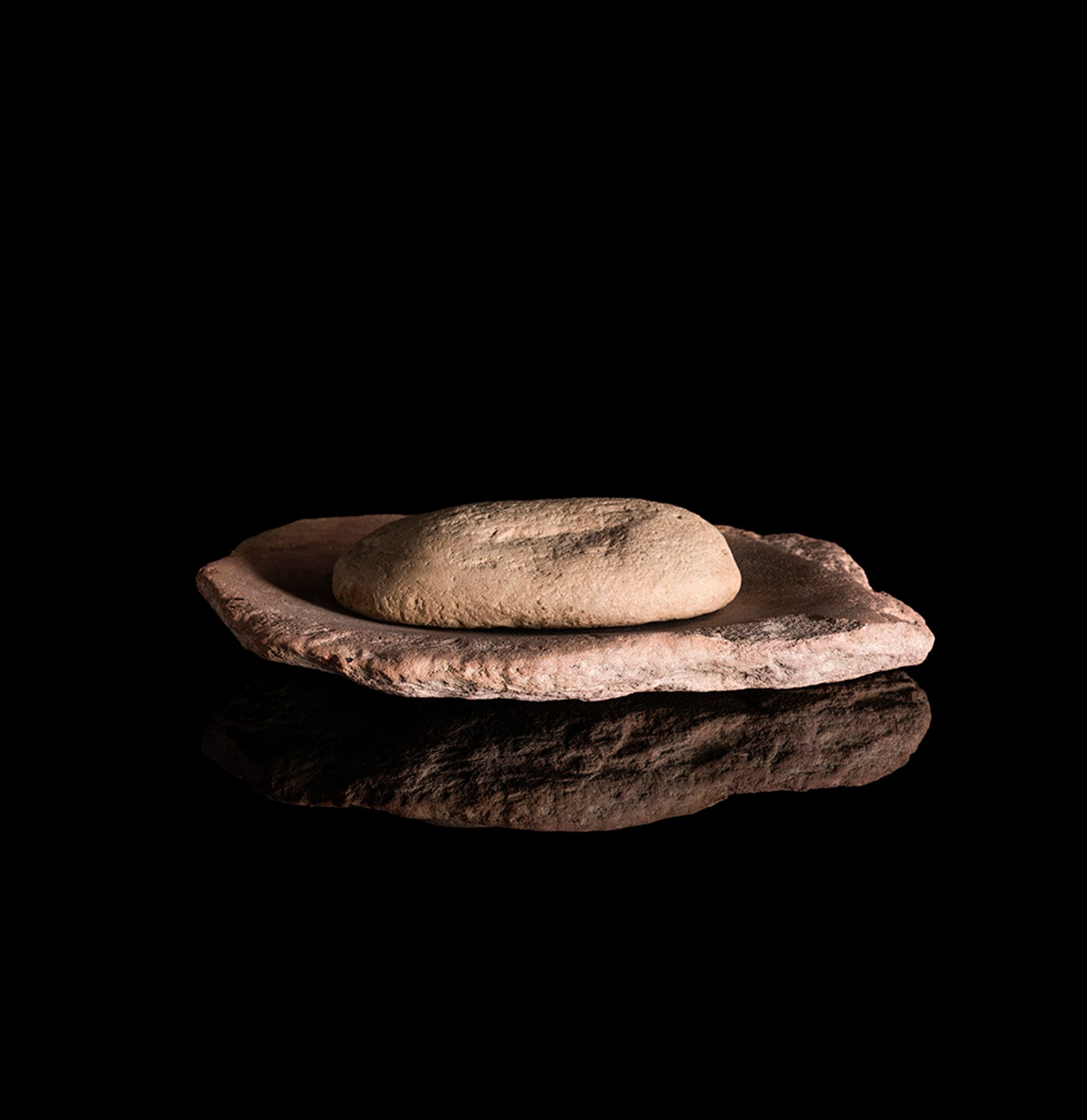
Rae Johnston Yiradhumarang mudyi, Rae Johnston youwin nahdee, Wiradjuri yinhaa baladoo. Hello, friends. My name is Rae Johnston, I am a Wiradjuri woman. I was born on Darug Country, and I was raised on Gundungurra Country where I have responsibilities to community and Country there. And it is an absolute honour to be with you here today on the unceded land of the sovereign Gadigal, and I wish to pay my deepest respects to their Elders past and present, and also extend that respect to my First Nations aunties and uncles, brothers and sisters that are in the room with me today. It is a lovely privilege.
Now we are recording live today in the Boiler Hall of the Powerhouse museum. And before it was home to the museum, this was the Ultimo Power Station. It was built in 1899 and it supplied coal powered electricity to Sydney’s tram system into the 1960s. In the context of this architectural artefact, we shift our focus forward to the innovations of the net zero revolution. Now, Terri, you were integral to the development of the Caring for Country Principles that underpin the Powerhouse Climate Action Plan. To begin our discussion, could you talk us through how caring for Country connects to sustainability and positive climate action.
Terri Janke Thanks Rae. Well, caring for Country is the principle that Indigenous people, First Nations people, have cared for Country over millennia. And the sustainability has been the benefit of what we see today. The land, seas and skies, that land, sea and sky Country is the result of Indigenous people looking after it. And we see at the point of contact that shifting different environmental management processes and the impact there. But we need to go back to those foundation principles for caring for Country being holistic. If you look after Country, it looks after you. Country is connected to health and wellbeing but everything economic, spiritual, cultural, life, that intergenerational obligation to care for it is a cultural practice. So, for sustainability, that’s, you know, a given foundational principle that can lead all Australians to care for our environment, our unique and beautiful Country. And it’s just a principle for all of us to put into practise for the benefit of future generations.
RJ So, Terri, the Caring for Country Principles, they are foundational to the Climate Action Plan for the Powerhouse. How were these developed?
TJ Yes, they are foundational, there’s ten principles and to come to that, we did a lot of research into what was being done in international principles, national principles. Work that I’ve done for over 25 years of my practising in this area and Indigenous cultural and intellectual property. It was also very much led by the consultation sessions that we did, and we connected with Dharug and Gadigal people in the community land councils, those that were really interested in this topic, and it was the sites where the Powerhouse is. So, here on Gadigal Country and on Dharug Country. But it’s also much wider because the reach of the Powerhouse is national and international and you know, there’s digital Country as well. So, we’ve got to think how these principles can really be embedded in the practice of the Powerhouse and its sustainability action plan. Its goals around climate change action is one thing, but it also, I feel, links to the work that Emily’s doing. I would say, Emily, you’ve brought so much of integrating Indigenous First Nations perspectives into the way that the Powerhouse works, and I think that’s just how seamlessly we want to be in the future to bring these principles. It’s pretty novel to have them, but it’s really something that we want to see all institutions having, and I think the Powerhouse is leading there.
RJ Emily, can you tell us a little bit about the work that you’re doing here at the Powerhouse in regards to integrating that Indigenous perspective?
Emily McDaniel I came on board to the Powerhouse about just over a year and a half ago, and the role of director First Nations in the sort of expansive 140-year history of the Powerhouse really marks the first moment that there has been self-determination for Indigenous people embedded in this museum. 140 years ago, this place was not created for us. This place as we know it today in the Boiler Hall, but also the more intangible notion of the Powerhouse Museum as we know it today. It wasn’t created for us. But this is a moment where we can redefine the role of a museum moving forward. My primary role is Indigenising, which I describe as looking at the systems of power that were built at times to exclude us, re-engineering them and using them to empower Indigenous advancement. And this is another one of those moments for us, a historic moment with the Climate Action Plan.
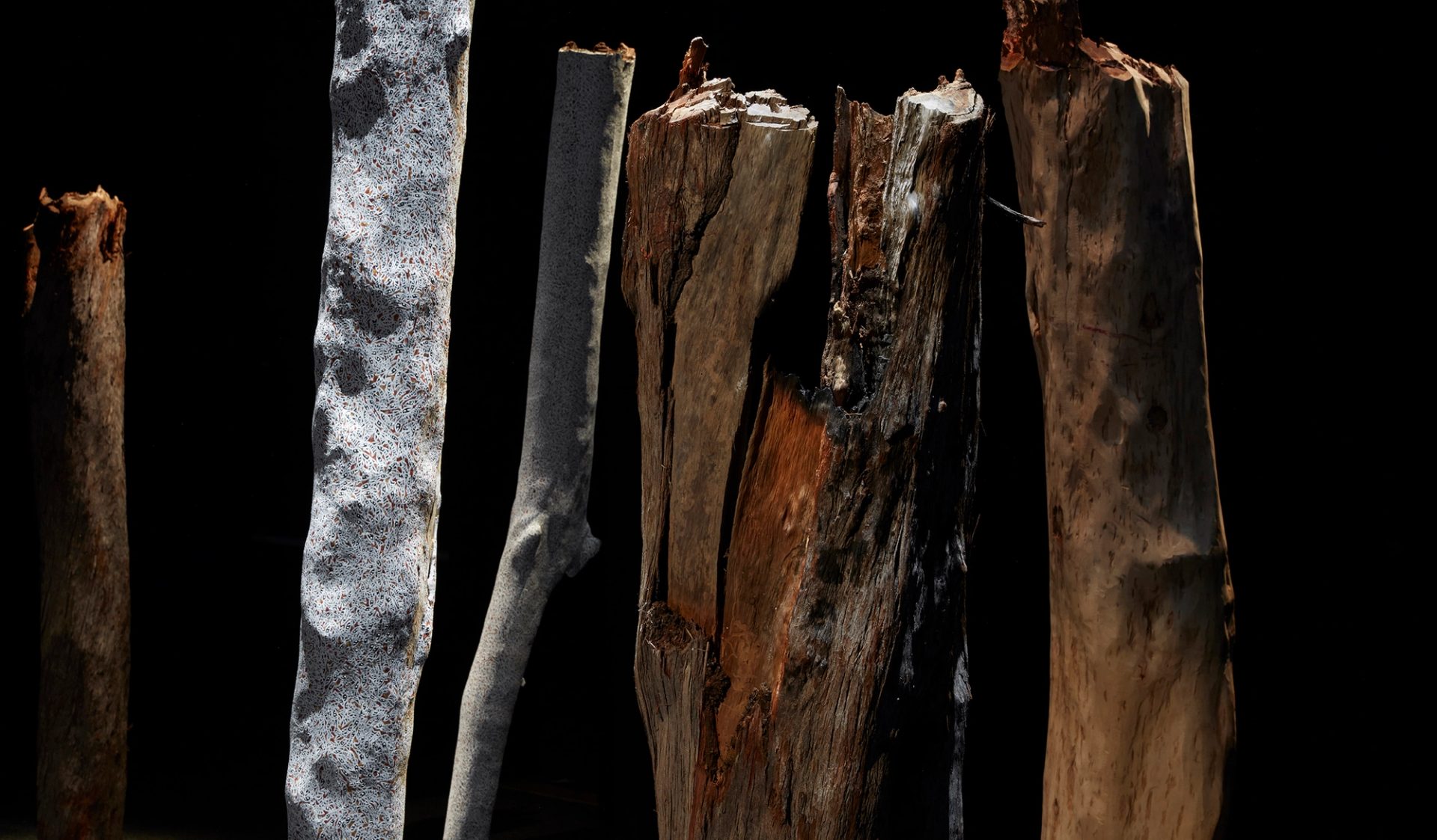

RJ Now Carmel, what are some sustainability challenges specific to museums, and what are some of the behind-the-scenes changes that you are making to address them?
Carmel Reyes Well, our Climate Action Plan is looking across the whole organisation, and I myself started with the museum just on a year ago, and I am new to the museum space. So, there was some environmental challenges that I had not yet thought of, things like, how do you care for a collection? How do you care for objects in very precise environmental controls? But even beyond that, thinking about the work that Emily had already started, by the time I was here, it was such a natural fit to start collaborating on how we will embed sustainability with the First Nations Directorate. And that in itself is, I think not only unique to museums, but unique to our time at the Powerhouse at this moment. The Climate Action Plan, as you see it, may not be the same sort of sustainability plan or Climate Action Plan we might have written five years ago or in five years time. It really is looking across the organisation to what is at hand now and ensuring that we take responsibility in our responses to that, by starting with the foundation of the Caring for Country Principles.
So, when we break that down, what that looks like is responding to our capital works program, which I think everyone is aware, we’re in the business of building new museums at the moment. It’s pretty significant. So, we have a section in our action plan that is specifically responding to infrastructure. How can we take advantage of this huge capital works program and ensure that we can embed all of those efficiencies, how we make people comfortable, how we make the collection comfortable, how can we get them into our infrastructure from the time that we open those doors? Then looking at our programs, how do we embed sustainability and Indigenise and have programs thought of in a different way, developed in a different way, but ensure that those things are always at the heart of them? And then also the plan looks at how we work, how do we ensure that we are taking care of objects in a way that’s not super energy intensive, that we take advantage of passive controls and really test ourselves with the various areas of the organisation, with our collection management team and our curatorial team, and how do we bring sustainability and the principles into the way that we work?
RJ Some of those challenges are kind of unavoidable though, aren’t they? You’ve got exhibitions that run on gas and can only run on gas. You’ve got collections that need to be kept at certain temperatures. How do you work around things like that here?
CR It’s a new challenge. And one great thing is that of course at our new Powerhouse Parramatta, we have decided – and it’s a very bold decision – not to introduce gas use at all, not to introduce fossil fuels into the way that we operate the building, which is a departure from what we see here at Ultimo. Our very, very well-known Steam [Revolution] exhibition runs on gas boilers. So, what do we do with that? Ultimo is going to undergo its own significant renewal and refurbishment and the challenge to our industry partners, whoever takes that on, will be to cut fossil fuels and let’s start from scratch with 100 per cent renewables.

‘At our new Powerhouse Parramatta, we have decided, and it’s a very bold decision, not to introduce gas use at all, not to introduce fossil fuels into the way that we operate the building.’
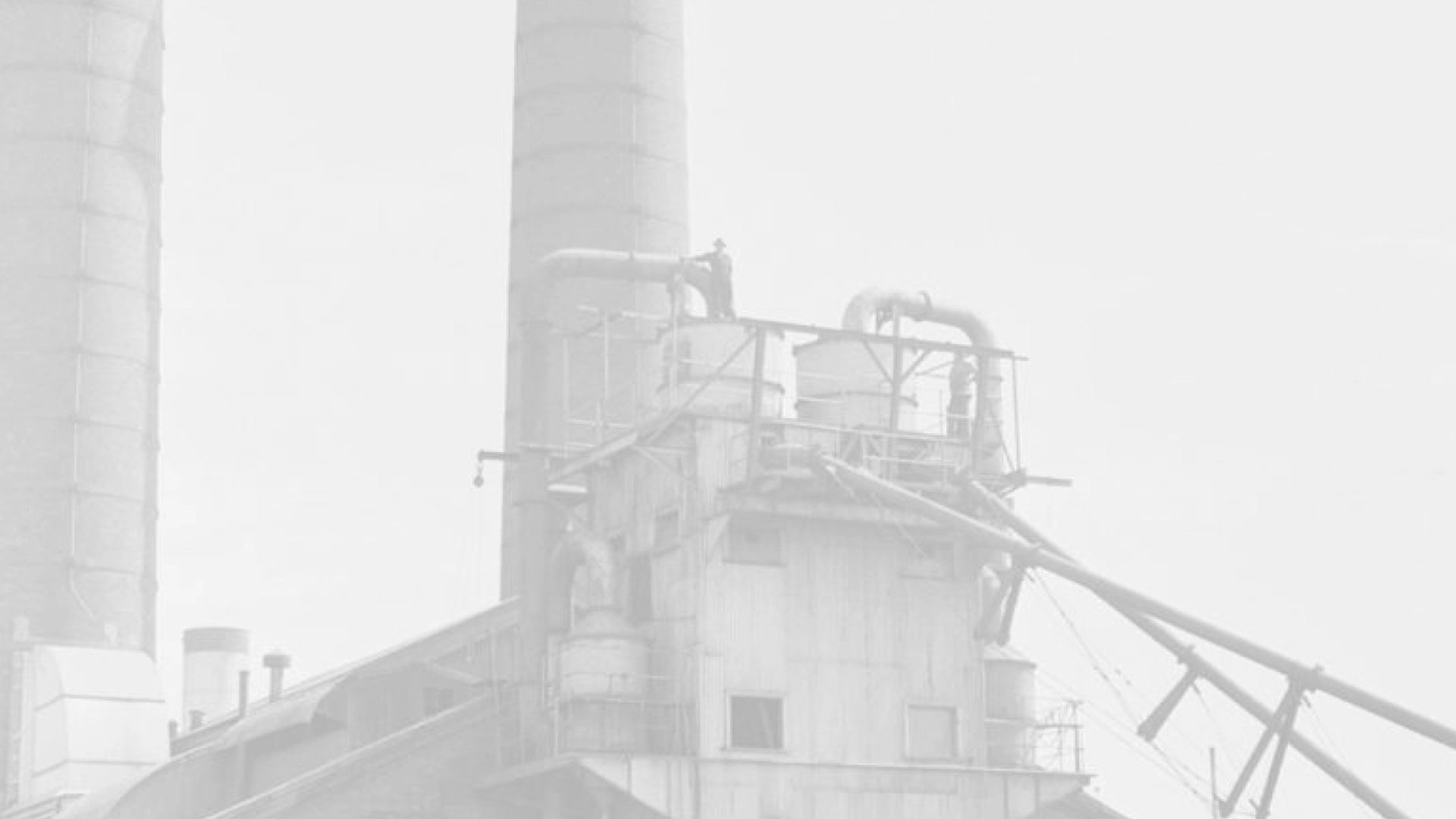
RJ Emily the Climate Action Plan, it’s not just about reducing energy or saving water. Can you tell us about how the Powerhouse has recently accepted the care of two shirts belonging to Eddie Koiki Mabo and how this marks a shift towards more sustainable museum practices. What does that mean?
EM Recently, earlier this year, we were very fortunate, after a long conversation with Gail Mabo, the daughter of Eddie Koiki Mabo, regarding the physical custodianship of two of her shirts. It provided a really interesting provocation for the museum. As my team began to expand and we have First Nations collections management, we’re asking big questions. What does it mean to collect? Why collect? What are the things that we cannot collect? And we were really faced with an interesting question by Gail, which is, well, what if I want it back one day? And we looked at each other as a team and said, ‘Fair enough, it’s your cultural belongings. It belongs to you. We will care for it in terms that we agree.’
But we actually created a deed of gift, which is a new way of understanding the role of museums. It also creates an accountability whereby if we are not upholding the expectations that have been set in contract, Gail is free to remove it from our custodianship at any one time. So, what does it mean to collect is the big question. And at the moment, with the launch of the Climate Action Plan, we’re asking big questions. We’re moving from a more material culture, which is to collect and to collate and to gather material culture, to focusing on the relational, the communities that we serve. So actually, a collection should be a reflection of the relationships that we hold. We hold a relationship with Gail Mabo and by extension her family. And from that trust we can now hold those objects.
RJ It feels like that should be the norm. That shouldn’t be the exception.
EM And I will state that it isn’t a first by any means. Many smaller keeping places have been doing this work, but for a larger cultural institution, it’s unavoidable Now. How we collect needs to be determined by communities, not cultural institutions.
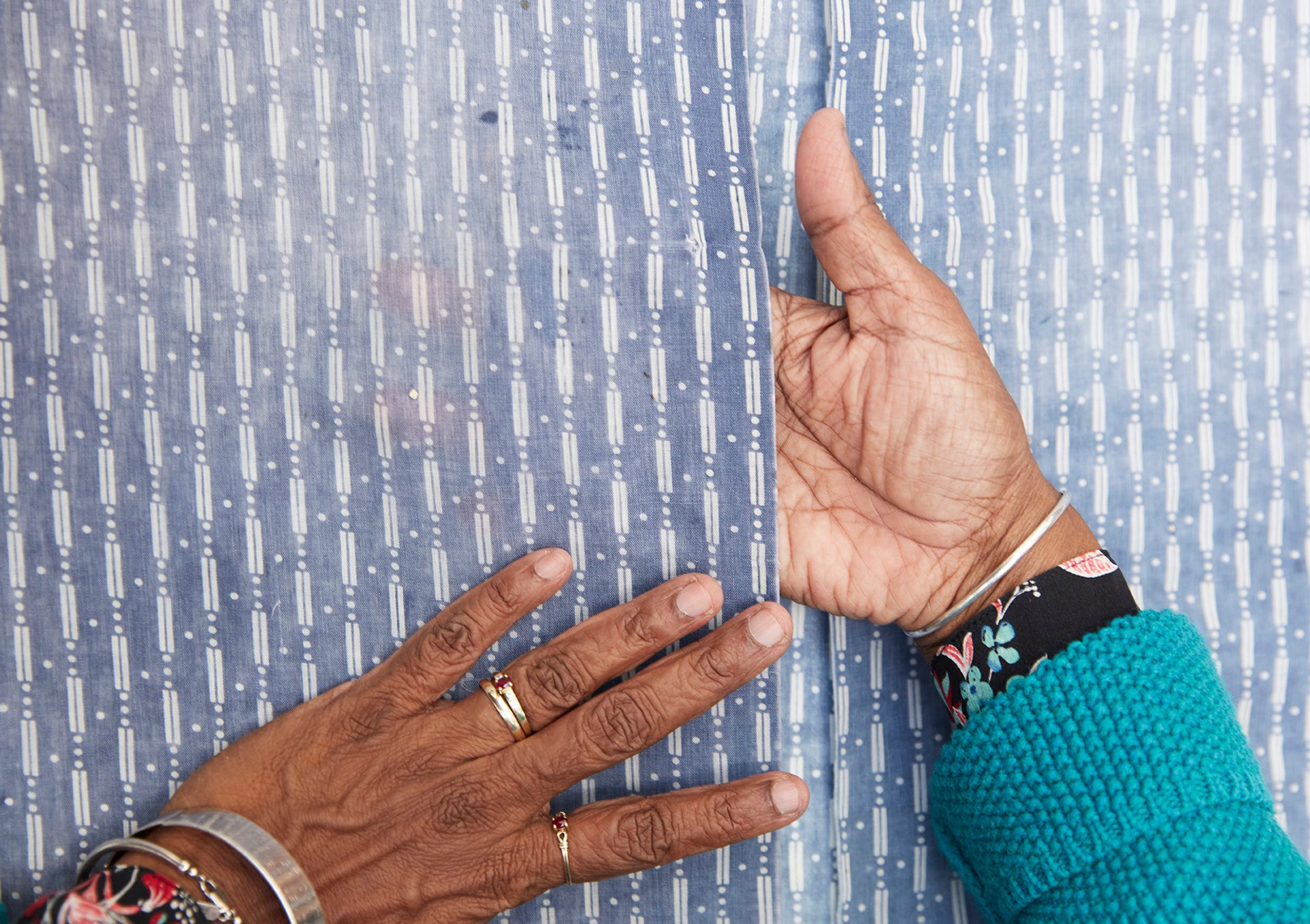
‘There is actually no sense in waiting while, as we speak, the Ultimo Design Competition is closed this week. If we were to say, ‘oh, we’ll think about net zero in 2040’, we would have lost the opportunity to embed it.’
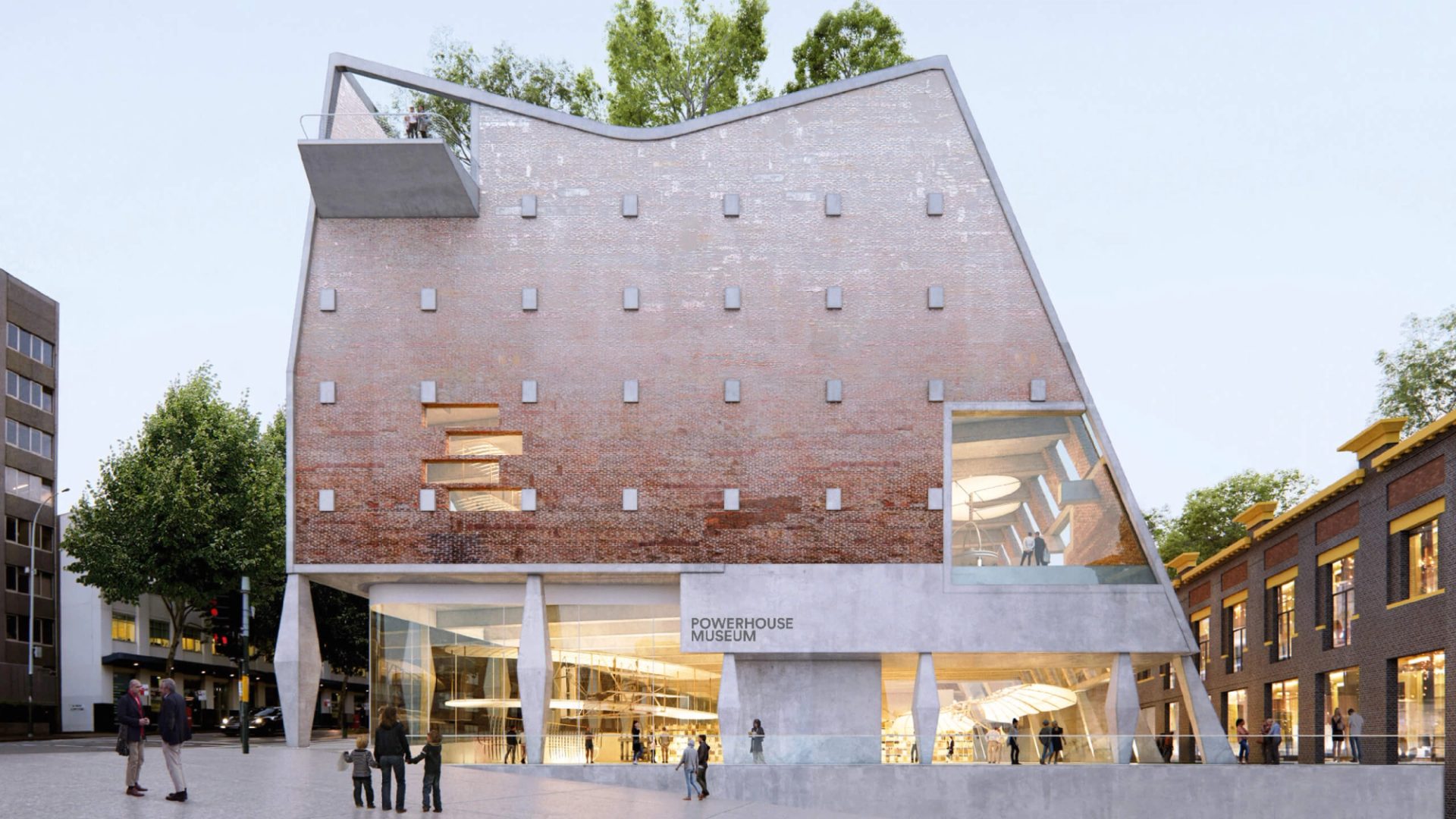
RJ Carmel, can you talk us through a little bit about what net zero operations actually means? And what are the big key moves that the Powerhouse is taking to achieve this?
CR So, we had a look across the organisation to get an understanding of where our carbon impacts are and largely they are in our museum buildings, they are in these huge expansive spaces that require very specific conditions. So, that was the natural start for us to aim for net zero within our own portfolio. So, net zero is looking at our buildings. It means that we run our buildings in a highly efficient manner. We move entirely away from fossil fuels altogether. We shift to 100 per cent renewable energy and at the same time we need to make sure that we can leverage the capital works program that we’re undertaking to start at that higher state of operation from day one. So, we really are sort of starting with the mechanics of things. By 2025 is soon and it’s the right time for it. For us, there is actually no sense in waiting. While, as we speak, the Ultimo Design Competition is closed this week. If we were to say, ‘oh, we’ll think about net zero in 2040,’ we would have lost the opportunity to embed it. It’s a once in a generation opportunity to renew the museum on the whole. So, we’re throwing everything at it.
RJ It’s pretty exciting.
CR It is. So, it involves us shifting our source of energy to 100 per cent renewables, ensuring that we can install renewable energy on site, which is earmarked for our large museum site at Castle Hill primarily. But all of our new builds will also incorporate renewable energy generated on site. The other thing that we have to do of course, is ensure that we source 100 per cent renewables, but even when we open those doors and we start at net zero, we have the responsibility then to maintain and ensure that we continue to operate at this state going forward.
‘Things like locality of place, the knowledge, the cultural flows, the languages, that holistic nature of caring for Country and most importantly, the stewardship … All of these are principles in the Caring for Country Principles.’
RJ Now, Terri, you were the first Indigenous co-chief author of the federal State of the Environment report in 2021. Can you tell us about yours and other Indigenous authors’ contributions to that report?
TJ Yeah, it was the first time Indigenous voices were written into the report, so there were about nine of us that wrote into the themes, every theme, and it included climate, extreme events. I was involved in the overview report, but also the Indigenous and the Heritage Report that included inland water and biodiversity, marine as well, coast and marine. And there was this amazing, committed group of First Nations authors that wrote in it. It was a difficult job because it was a national report and how to do that. And the thing is, is that in the past, there’s always been a preference to Western science knowledge and those sorts of scientific observations. But with Aboriginal and Torres Strait Islander people caring for Country for many thousands of years, but also living and having close connection to Country. So, it was a job of putting those two perspectives together. So, Indigenous science, Western science, Indigenous perspectives, sort of Western perspectives. And it came together well.
We also were informed by national consultations and people’s voices are written into the report, it’s quite different in any report before in that it allows the voices of Indigenous people. It actually details things like the impact of language and art practice, or the role of Indigenous rangers and how that connects to health and wellbeing and sustainability in a much wider way than I guess the UN Sustainable Development Goals would have. It’s that deeper caring for Country that is so integral to Indigenous ways of knowing and practice. And the report actually details what is Country, that integrated holistic notion. The tangible and intangible it is, you know, the land, sea and skies, the waterways, the people, the things on the planet knowledge, the seasonal knowledge. It’s so deep and it was great to have that recognised and detailed in a report of that nature. And I really hope that people will take that up, the findings to build on things.
But I see the work that the Powerhouse has done on the Museum of Applied Arts and Sciences in putting it into their Climate Action Plan, is really what we wanted to do as authors, to see people take it up. And those things like locality of place, the knowledge, the cultural flows, the languages. That holistic nature of caring for Country and most importantly, the stewardship. All of these are principles in the Caring for Country Principles. They are really the things that can be what all Australians, you know, the leading institutions, the companies, places like this that have influence on people’s behaviour can really give life to. And really have that immediate shift that we need to have to look after the Country. It’s in devastating decline. But it’s not too late. We can turn it around. And when institutions like the Powerhouse take it on board, it’s something that, you know, I as a co-chief author, I think all of the authors would say is, well, that’s really good, that our work can really spark that change.
It’s a big thing. You know, the connection that Indigenous people have with country, very spiritual and the heart of it, and the authors felt it, the gravity of that. And I think the people that we connected with, and I like that the report had a go at that. It’s the first go. I hope that it will be continued in the next five years, and it’s not left too late. I mean, there was a lot of writing to do it in there for those five years. But it’s something now that because of the uniqueness of this Country and the uniqueness of Aboriginal and Torres Strait Islander culture and those working and living on Country, it’s a real unique opportunity for us to take the foundations for caring for Country and really look after the environment. Was good to work on.
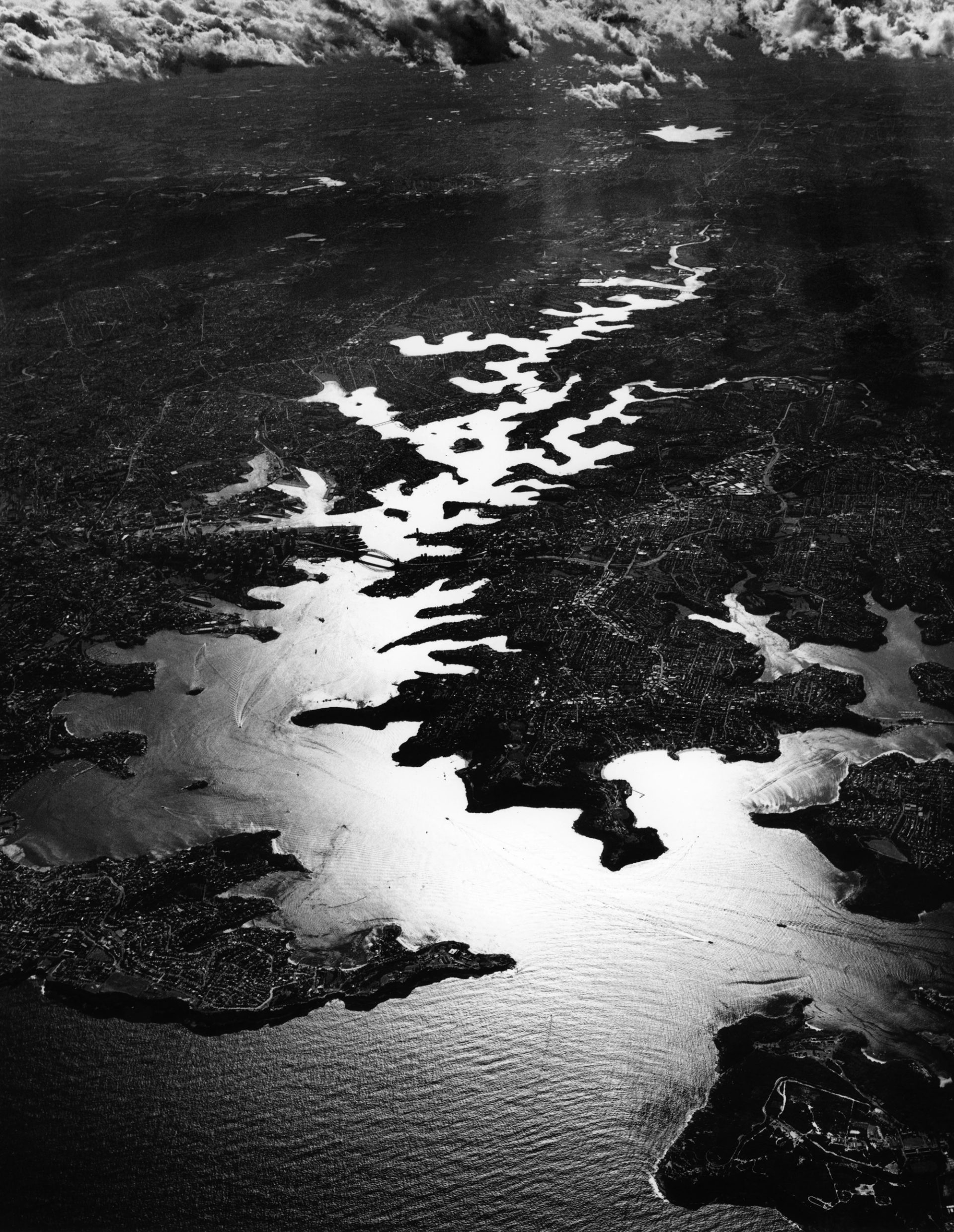
RJ Absolutely. Now Carmel, looking at Powerhouse Parramatta, it presents an incredibly rare opportunity to be able to design and build a museum from the ground up. All of these sustainability principles in mind. What are the specific opportunities that Powerhouse is taking over there? I want to hear more about what will be integrated into this building.
CR Yeah, well, there are, just to go off Terri’s point about taking the principles and embedding. I think it’s an interesting time because we’re taking those principles and putting them into urban landscapes. And even in the development of the Climate Action Plan, we were primarily thinking about decarbonisation and the opportunity that that presents in the new build. But when it came down to it, our number one objective was to ensure that we practise responsible stewardship. And that came out of those consultations, and it came out of all our work together. And so with that stewardship, we can we can see that sort of come to life, but in an urban environment, in an adapted way, I mean, there is – people may that may or may not be familiar with the intent of the museum – but it is sort of throwing the idea of museum up in the air a bit and incorporating concepts that may not have been seen in museums before, such as having an onsite student academy. Research residencies, students have that educational experience and that’s something that then lends itself to the social sustainability outcomes that we hope that a significant cultural institution will inject to Western Sydney.
The opportunity to build relationships and build resilience across community, reflect stories. All of those things are up for grabs in a new museum, but primarily the opportunity to practise responsible stewardship in urban environments. I think often there is that perception that going back to caring for Country is just sort of forgetting about the city, which is absolutely not the case and we’re not able to do at the Powerhouse, but it does present so many opportunities and watch this space, it’s going to be a different kind of museum. Emily can probably speak more to the programming then that comes through that because it’s not just the building itself and all the responsibility that we take on with the build, ensuring that it’s a low carbon build, that we deal with our upfront carbon emissions and how it will operate, but how do we engage?
EM And it’s telling stories of urgency for this moment, the stories we have to tell. And perhaps they’re undefined without an outcome, without a summary. But that’s what a museum should be. The space where we can have the difficult conversations from this moment, and it can be challenging for people to speak of climate change. There is that sense of overwhelming doom and where do we move from here? But we can move through stories, through expression, through exhibitions and that’s what Powerhouse Parramatta can be and will be.
RJ. Even the construction of the building itself though, you’ve got, you know, renewable diesel being used on site, you’ve got a rooftop garden being built. So, even just looking at the actual structure itself, it seems like that sets the scene for what you are going to be able to experience once you get inside the museum. And Emily, from that museum specific context, I’d love to hear from you how Indigenising ways of working supports sustainable practices.
EM In this moment, what we’re really doing is way of reckoning with our history. We’re taking responsibility. And museums historically have been a vehicle, an expression of colonial expansion and the colonial regime. That’s the history that we’re holding in our hands and moving forward. It’s a moment where we’re not denying it, but we’re understanding what’s our role stepping forward with this? What’s the role that a museum can play today that it didn’t 140 years ago? It’s telling those urgent stories. When we started working on the Caring for Country Principles, so many people thought that it would be referring to physical landscapes, waterscapes, skyscapes, landscapes. But actually, if you look at them, predominantly they’re about cultural practice because there’s also the cultural scape and it isn’t an overlay of Country, it is Country. And culture is exactly the reason why we’re focusing on our renewal project.
RJ So, thinking about the future now, you’ve got the Climate Action Plan, it takes the Powerhouse to 2025. Beyond 2025, Carmel what’s next?
CR Beyond 2025, this document that you see in front of you, it’s all in the rear vision. We have achieved the objectives that we’ve set out to, hopefully. We’re operating in a new site, and what we’ve done with this foundational piece of work is to elevate our standards. It’s just the way we do things. Some of the objectives that you see in the plan, that we operate at net zero amongst many others. That we’ve embedded sustainability in our ways of working. The words sustainability, the objectives, they all go away because that’s just the way that we do things. That’s the hope. And then beyond that, what we actually look forward to is continuing to reduce our footprint. We work towards climate positive precincts that go beyond net zero. And we’re relentless in that. We just keep at it until we ensure that we lead by example. We can tell the story of the museum, of the Powerhouse achieving this state of operation that, you know, a few years ago may have seemed unattainable. But it is just our new way of working.
RJ Fantastic. Well, please join me in thanking our guests for today’s discussion. For more information about the Powerhouse Climate Action Plan, go to the Powerhouse website. To follow 100 Climate Conversations online, you can subscribe wherever you get your podcasts. And to visit the 100 Climate Conversations exhibition or to join us for a live recording, go to 100ClimateConversations.com. Thanks, everyone.
